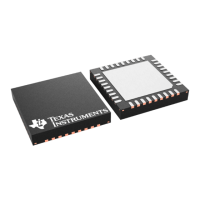Byte synchronization is achieved by a
continuous sync word search. The sync word
is a 16 bit configurable field (can be re
to get a 32 bit) that is automatically inserted at
the start of the packet by the modulator in
transmit mode. The demodulator uses this
field to find the byte boundaries in the stream
of bits. The sync word will also function as a
since only packets with the
correct predefined sync word will be received
sync word detector correlates against the
onfigured 16 or 32 bit sync word. The
correlation threshold can be set to 15/16,
16/16, or 30/32 bits match. The sync word can
be further qualified using the preamble quality
indicator mechanism described below and/or a
carrier sense condition. The sync wo
In order to make false detections of sync
words less likely, a mechanism called
preamble quality indication (PQI) can be used
word. A threshold value for
the preamble quality must be exceeded in
order for a detected sync word to be accepted.
packet oriented radio protocols.
In transmit mode, the packet handler can be
configured to add the following elements to the
packet stored in the TX FIFO:
mmable number of preamble
A two byte synchronization (sync) word.
Can be duplicated to give a 4
word (recommended). It is not possible to
only insert preamble or only insert a sync
um computed over the data
The recommended setting is 4
byte sync word, except for 500
data rate where the recommended preamble
In addition, the following can be implemented
on the data field and the optional 2
Whitening of the data with a PN9
rward error correction by the use of
interleaving and coding of the data
In receive mode, the packet handling support
construct the data packet by
implementing the following (if enabled):
CRC computation and CRC chec
Packet length check (length byte checked
a programmable maximum length)
interleaving and decoding
) with RSSI value, Link Quality
(first byte appended after the data)
1: CRC for received data OK (or
0: CRC error in received data
The Link Quality Indicator
estimates how easily a received
(second byte appended after the data)
Note that register fields that control the packet
handling features should only be altered when

